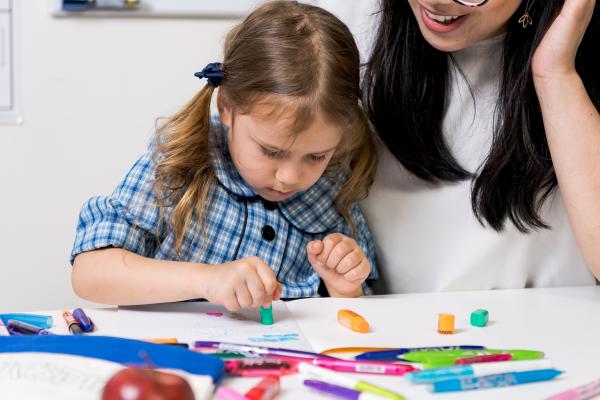Getting the kids ready for starting school or moving up a year can be daunting after the long summer holidays but a little bit of forward planning can help you and your children sail smoothly and calmly into the new school year. Here, Jennifer Shipway, school teacher, mum of six and owner of popular Instagram site, ‘Where Learning Meets Play’, shares her top tips to guide you:
1. Make a list – carefully make a list of all the items recommended by the child’s school, that you don’t already have. If you keep the list with you, it’s easy to pick a few items up as you are shopping for other things so it’s less overwhelming. Buy extra stationery and keep it in an easily accessible basket, so there are always items on hand when you need them.
2. Start early – purchase necessary items early as leaving shopping to the last minute may mean shoe sizes are unavailable or the raincoat you need is challenging to find. (Trust me I know this from personal experience!) The night before school, pack extra clothes. Include socks and underwear, just in case.
3. Set the scene – read books about starting school, in a casual way, giving your child a chance to ask questions if they want to. Reading books together every day is a great way to encourage early literacy skills.
4. Show and tell – walk/drive past the school occasionally (or walk to the school if it’s close by), mentioning calmly that it is ‘our’ school. It’s great for children to hear that parents see it as their school too and that they are part of the wider school community.
5. Practice writing – give your child playful opportunities to practice writing their name. Make sure you are encouraging them to have a capital letter at the start, with the remainder lower case letters. If your child is afraid of making mistakes, try Frixion erasable ink pens so they can rub out any mistakes and start again to help build their confidence. They are great when children are starting out with cursive writing. (I always keep a selection on hand in a basket so they are easy to add to pencil cases later in the year when replacements are needed).
6. Playtime – Enjoy play based activities together that encourage the use of fine motor skills. Visit a park near the school to provide opportunities for play with other children.
7. Dress rehearsal – encourage your child to dress themselves in the months leading up to school. Buy Velcro shoes until they’re confident with laces. Keep shoes with laces for the weekend when there’s time to practise. Practice packing a healthy, simple lunch together. At snack and lunchtime, encourage your child to open the containers and pack them away themselves. Ensure your child has plenty of practice using the toilet and washing their hands independently.
8. Label everything – every single thing! Every. Thing. Even socks and inside shoes. Choose a good permanent marker. I really like Pilot Pen’s Permanent and Laundry Markers because you can use them on anything and they don’t fade. Keep one in a drawer in the kitchen so you can label new items and drink bottles after they have been washed.
9. Shop wisely – make sure you buy a lunch box and drink bottle that are easy to clean. It’s important that the child can easily operate these themselves and the drink bottle doesn’t spill easily.
10. Sleep routine – as the holiday comes to a close, make sure there is a calm and predictable bedtime routine in place, as children will be extra tired once they start school.







